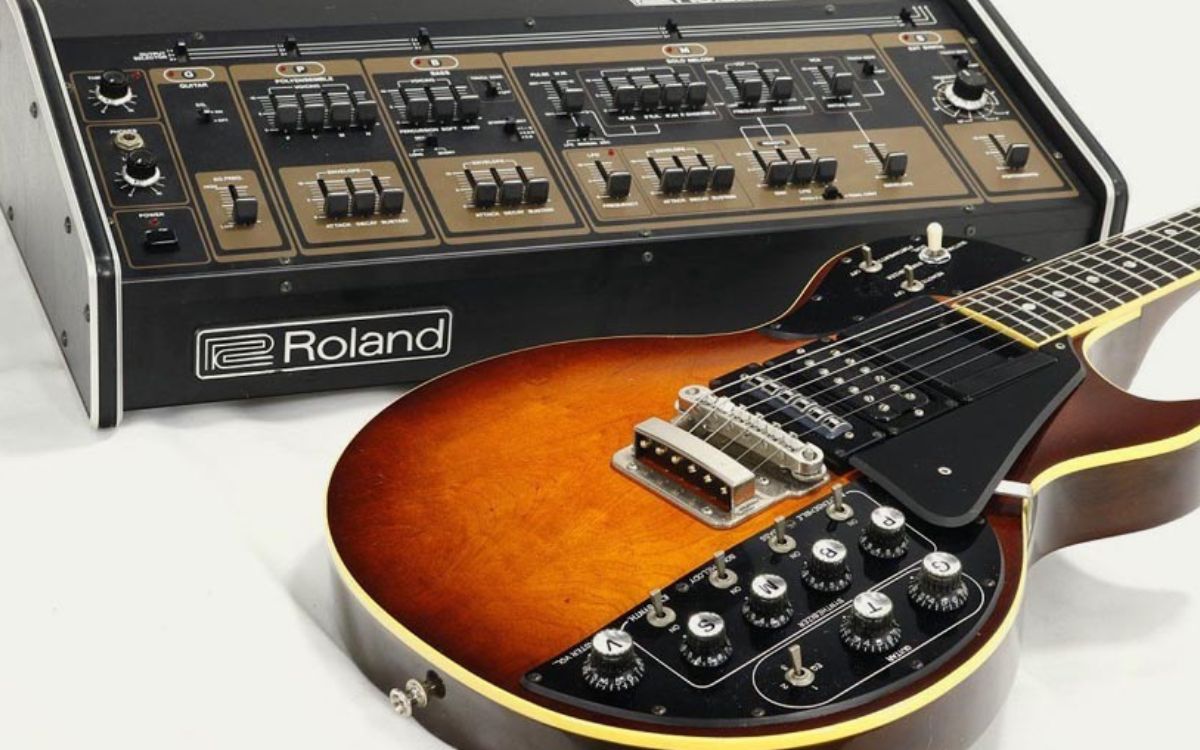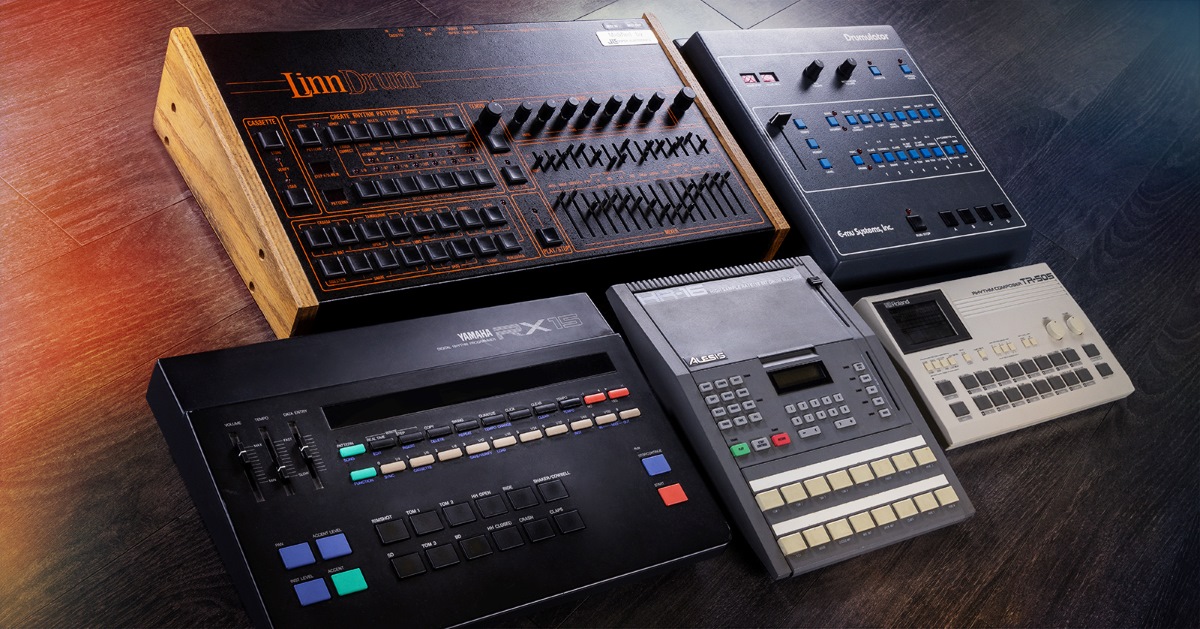Home>Instruments>Synthesizer>How To Make String Machine Sounds With A Synthesizer


Synthesizer
How To Make String Machine Sounds With A Synthesizer
Modified: January 22, 2024
Learn how to create amazing string machine sounds with a synthesizer. Unlock the full potential of your synth and explore the world of unique string textures.
(Many of the links in this article redirect to a specific reviewed product. Your purchase of these products through affiliate links helps to generate commission for AudioLover.com, at no extra cost. Learn more)
Table of Contents
Introduction
Welcome to the world of synthesizers, where musical possibilities are virtually limitless. One particular genre of sound that has captivated musicians and listeners alike is the mesmerizing string machine sound. Derived from vintage analog synthesizers, string machine sounds are known for their rich, lush, and ethereal qualities. In this article, we will explore how to create these enchanting sounds using a synthesizer.
String machine sounds were first popularized in the 1970s and 1980s by innovative synthesizer manufacturers such as ARP, Roland, and Solina. These instruments were designed to emulate the sound of traditional orchestral string sections, but with a unique and otherworldly twist.
Today, with advancements in synthesizer technology, it is easier than ever to recreate the nostalgic charm of those iconic string machine sounds. Whether you’re a beginner or an experienced synthesizer enthusiast, this guide will walk you through the process of crafting your own string machine sounds.
In this article, we will explore the fundamental concepts behind string machine sounds, discuss the different types of synthesizers suitable for creating these sounds, and provide step-by-step instructions to help you achieve the desired results. Additionally, we will share tips and techniques to make your string machine sounds more realistic and captivating.
So, whether you’re looking to add a dreamy touch to your compositions or simply curious about the inner workings of synthesizers, strap in and get ready to dive into the fascinating world of string machine sounds with your trusty synthesizer!
Understanding String Machine Sounds
To effectively create string machine sounds with a synthesizer, it is important to understand the key characteristics that define this unique sound. String machine sounds are characterized by their lush, warm, and evolving quality, resembling the sound of a full string section.
One of the defining features of string machine sounds is the ensemble effect. This effect emulates the sound of multiple string instruments playing together, creating a rich and thick texture. The ensemble effect adds a sense of depth and movement to the sound, making it more dynamic and lifelike.
Another important aspect of string machine sounds is the use of modulation. Modulation refers to the manipulation of various parameters of the sound over time. For string machine sounds, modulation is often used to create a gentle and natural vibrato effect, giving the sound a more organic and expressive quality.
In addition to ensemble and modulation effects, string machine sounds often incorporate a slow attack and a long release. This means that the sound gradually fades in and sustains for an extended period before slowly decaying. This attack and release envelope shape contributes to the smooth and flowing nature of the sound, mimicking the behavior of a real string instrument.
Furthermore, string machine sounds can be layered with other complementary sounds, such as pads or drones, to add depth and complexity. These layered sounds can help fill out the sonic spectrum and create a more immersive and captivating listening experience.
By understanding these key elements of string machine sounds, you will be better equipped to recreate and customize this distinctive sound using your synthesizer. In the next section, we will discuss the different types of synthesizers that are well-suited for creating string machine sounds.
Choosing the Right Synthesizer
When it comes to creating string machine sounds, choosing the right synthesizer is crucial. Not all synthesizers are created equal, and some are better suited for capturing the essence of string machine sounds than others.
One type of synthesizer that is particularly well-suited for recreating string machine sounds is the analog synthesizer. Analog synthesizers utilize electronic circuitry to generate and manipulate sound waves, resulting in a rich and organic sound. The warm and lush characteristics of analog synthesizers make them a popular choice among musicians seeking to replicate the vintage string machine sound.
Some analog synthesizers have dedicated string machine modes or presets, which can instantly provide you with a solid starting point for creating string machine sounds. These presets often incorporate the necessary ensemble and modulation effects, as well as the characteristic attack and release envelope shape.
Another type of synthesizer that can be used to create string machine sounds is the software synthesizer. These synthesizers are digital and run on computers or digital audio workstations (DAWs). While they may lack the analog warmth of hardware synthesizers, software synthesizers offer a vast array of features and options for sound customization. With the right virtual instruments and effects, you can achieve convincing string machine sounds using a software synthesizer.
When choosing a synthesizer, consider factors such as your budget, preferred workflow, and specific sound requirements. If you value the hands-on experience and tactile control of physical knobs and sliders, an analog synthesizer might be the best choice for you. On the other hand, if you prefer the flexibility and convenience of digital software, a software synthesizer can offer endless possibilities and easy integration with your existing setup.
Ultimately, the choice of synthesizer comes down to personal preference and the specific sound you are aiming to achieve. Whichever route you choose, ensure that the synthesizer provides the necessary features and capabilities to create lush and expressive string machine sounds.
Now that you understand the importance of choosing the right synthesizer, let’s move on to the next section, where we will guide you through the process of setting up your chosen synthesizer for creating string machine sounds.
Setting Up the Synthesizer
After choosing the right synthesizer to create your string machine sounds, the next step is to set it up properly. This involves configuring the necessary settings and parameters to lay the foundation for crafting your desired sound.
The first step in setting up your synthesizer is to select the appropriate sound architecture. Many synthesizers offer different synthesis methods such as subtractive synthesis, wavetable synthesis, or physical modeling. For recreating string machine sounds, the most commonly used method is subtractive synthesis. This method involves starting with a rich and harmonically complex sound and then sculpting it using filters, envelopes, and modulation.
Once you have chosen the sound architecture, it’s time to configure the oscillators. For string machine sounds, start with one or two oscillators set to produce a sawtooth or square wave. These waveforms provide a rich and full-bodied foundation for the sound. Adjust the pitch of the oscillators to your desired octave range, keeping in mind that lower octaves tend to sound more like cello or bass, while higher octaves resemble violin or viola.
Next, apply a low-pass filter to shape the tone. Set the cutoff frequency to a level that allows the desired amount of brightness and warmth for your string machine sound. Adjust the resonance parameter if you want to emphasize certain frequencies or add a touch of resonance.
Envelope and modulation settings play a crucial role in creating authentic string machine sounds. Set the amplitude envelope to have a slow attack time to mimic the gradual fade-in of real strings. Adjust the decay and release times to shape the sustain and decay characteristics of the sound.
Add modulation to introduce movement and expression to the sound. Assign a low-frequency oscillator (LFO) to modulate the pitch or filter cutoff. Experiment with different LFO waveforms and modulation depths to achieve the desired vibrato effect that characterizes string machine sounds.
As you fine-tune the settings, take note of any additional parameters specific to your chosen synthesizer that can further shape the sound. For example, some synthesizers may have parameters for adjusting oscillator detuning, envelope curves, or even ensemble effects. Explore these options and experiment with different combinations to achieve your desired string machine sound.
Once you have set up your synthesizer with the appropriate architecture, oscillators, filters, envelopes, and modulation, you are now ready to dive into creating the basic string sound. In the next section, we will guide you through the process of crafting the foundation for your string machine sound.
Creating the Basic String Sound
Now that your synthesizer is properly set up, it’s time to start creating the basic string sound. This step will lay the foundation for the lush and ethereal qualities that characterize string machine sounds.
Begin by adjusting the oscillators to produce a rich and harmonically complex sound. Experiment with different waveforms, such as sawtooth or square, to find the timbre that best suits your desired string sound. You can also detune the oscillators slightly to add depth and thickness to the sound.
Next, apply a low-pass filter to shape the tone. Start by setting the cutoff frequency to a level that allows a good balance between brightness and warmth. Gradually increase the resonance if you want to emphasize certain frequencies or add a touch of resonance to the sound.
To achieve the signature string machine sound, it is essential to incorporate the ensemble effect. Some synthesizers have a dedicated ensemble effect or chorus effect that mimics the sound of multiple string players performing together. If your synthesizer has this feature, activate it and adjust the depth and rate settings to your liking.
If your synthesizer does not have a built-in ensemble effect, you can create a similar effect by layering multiple voices or detuning the oscillators slightly. Experiment with different detuning amounts and layers to achieve a fuller and more expansive sound.
Once you have the basic string sound dialed in, play around with the modulation capabilities of your synthesizer to introduce movement and expression. Use an LFO to modulate the pitch or filter cutoff, creating subtle variations in the sound. Adjust the LFO rate and depth to achieve the desired vibrato effect commonly heard in string machine sounds.
Remember to listen closely and adjust the parameters as you go along. Fine-tune the oscillators, filters, and modulation settings until you are satisfied with the overall sound. It may take some experimentation and tweaking to find the perfect balance and achieve the desired string machine sound.
Once you have crafted the basic string sound, you can move on to the next step – adding envelope and modulation effects to further enhance the expressiveness and realism of your string machine sounds.
In the following section, we will delve into techniques for adding envelope and modulation effects to bring your string machine sounds to life.
Adding Envelope and Modulation
To truly bring your string machine sounds to life, it is crucial to incorporate envelope and modulation effects. These effects add depth, expression, and movement to your sound, making it more realistic and dynamic.
Start by focusing on the envelope settings. The envelope controls how the sound evolves over time, including parameters such as attack, decay, sustain, and release. For string machine sounds, aim for a slow attack time to mimic the gradual fade-in of real strings. This slow attack creates a smooth and organic sound, resembling the natural bowing of a string instrument.
Adjust the decay and sustain parameters to shape the sustain and release characteristics of your sound. Longer decay and release times will create a more legato-like response, while shorter times can result in a staccato effect. Experiment with different envelope settings to find the appropriate balance for your desired string machine sound.
Now, let’s delve into modulation. Modulation adds movement and expressiveness to your string machine sound. One popular modulation effect for string machine sounds is vibrato. Vibrato is a slight variation in pitch that occurs naturally when a string player modifies the tension of the vibrating string. Apply an LFO to modulate the pitch of your sound, simulating the vibrato effect. Adjust the LFO rate and depth to achieve the desired vibrato intensity and speed. This adds an organic and expressive touch to your string machine sound.
In addition to vibrato, consider experimenting with other modulation effects such as tremolo or modulation of the filter cutoff. Tremolo is a modulating volume effect that can add rhythmic pulsations to your sound, creating a sense of movement and dynamics. Modulating the filter cutoff can result in a sweeping and evolving sound, adding further complexity and interest to your string machine sound.
Remember that the intensity and depth of modulation can greatly impact the character of your sound. Play around with different modulation settings and listen closely to determine what best fits your desired outcome. It’s always a good idea to practice and adjust in real-time to refine and optimize the modulation effects.
Additionally, some synthesizers offer additional modulation sources such as aftertouch or velocity sensitivity. Aftertouch allows you to modify the sound by applying pressure to the keys after they are initially struck. Velocity sensitivity, on the other hand, reacts to the force with which you strike the keys. These modulation sources can add an extra layer of expressiveness and realism to your string machine sounds.
By incorporating envelope and modulation effects, you can take your string machine sounds to the next level. These effects add depth, movement, and expressiveness, allowing you to create more realistic and captivating string machine sounds.
In the next section, we will explore different techniques for applying effects to enhance the overall sound and take your string machine sounds even further.
Applying Effects to Enhance the Sound
In order to take your string machine sounds to the next level, it is essential to apply effects that enhance and enrich the overall sound. Effects add depth, space, and character to your sound, transforming it into a lush and immersive sonic experience.
One of the most commonly used effects for string machine sounds is reverb. Reverb simulates the natural reverberation that occurs in different acoustic spaces, adding ambience and spaciousness to your sound. Apply a moderate amount of reverb to your string machine sound to create a sense of depth and realism, mimicking the sound of strings resonating in a concert hall or a large space.
Experiment with different reverb parameters such as decay time, pre-delay, and room size to achieve the desired effect. If your synthesizer has different reverb presets, try out various options to find the one that best complements your string machine sound.
In addition to reverb, consider incorporating delay effects. Delay adds echoes or repetitions of the sound, further enhancing the sense of space and creating a unique sense of movement. Adjust the delay time, feedback, and mix levels to add subtle or pronounced rhythmic patterns to your string machine sound.
Furthermore, chorus and flanger effects can be utilized to give your string machine sound a richer and more vibrant quality. Chorus imparts a lush and shimmering texture by detuning the sound slightly and modulating it with a delayed version. Flanger, on the other hand, creates a swooshing effect by combining the original sound with a slightly delayed and modulated copy. Experiment with different chorus and flanger settings to find the sweet spot that enhances the depth and richness of your string machine sound.
If your synthesizer provides additional effects such as phaser, distortion, or EQ, explore their possibilities to shape the sound further. A touch of subtle distortion can add warmth and grit, while EQ can be used to enhance or cut certain frequencies to achieve a desired tonal balance.
Remember that the key is to use effects tastefully and in moderation. Too much reverb or excessive modulation can lead to a muddy or overwhelming sound. Listen carefully and adjust the parameters to find the right balance that enhances the inherent beauty and character of your string machine sound.
By applying effects strategically, you can transform your string machine sound from a simple waveform into a lush and captivating sonic experience. The combination of reverb, delay, chorus, and other effects will add depth, movement, and character to your sound, elevating it to a whole new level.
In the next section, we will share some valuable tips and techniques to help you create even more realistic and convincing string machine sounds.
Tips and Techniques for Realistic String Machine Sounds
Creating realistic string machine sounds requires attention to detail and a keen understanding of the characteristics of real string instruments. Here are some tips and techniques to help you achieve more convincing and authentic string machine sounds:
- Layer different string machine sounds: Experiment with layering multiple instances of your synthesizer, each set with slightly different settings or detuning. This will add complexity and richness to your sound, mimicking a real string section.
- Use velocity sensitivity: Take advantage of the velocity sensitivity feature on your synthesizer. Assign different sound parameters, such as filter cutoff or volume, to respond to the velocity at which you strike the keys. This will add dynamic expression to your string machine sound.
- Apply microtuning: Explore the world of microtuning to add subtle variations in pitch and create a more organic and organic sound. Small tuning deviations replicate the imperfections and nuances found in real string instruments.
- Experiment with different playing techniques: Vary your playing technique on the synthesizer to replicate different articulations and techniques used in string playing. Explore techniques like legato, pizzicato, spiccato, and tremolos to add variety and realism to your string machine sounds.
- Utilize the expression wheel or modulation wheel: Assign the expression wheel or modulation wheel on your synthesizer to control parameters such as vibrato depth or filter cutoff. This enables you to add expressive nuances and make your string machine sounds more responsive and dynamic.
- Combine with other instruments: Instead of using the string machine sound in isolation, try layering it with other instruments or sound textures. Pads, ambient sounds, or even vocal samples can complement and enhance the string machine sound, creating a more textured and immersive sonic landscape.
- Play with dynamics: Experiment with playing dynamics to bring your string machine sounds to life. Varying the pressure or force that you apply to the keys can create subtle fluctuations in volume and articulation, mimicking the nuances found in real string playing.
Remember to trust your ears and experiment with different techniques, settings, and combinations to achieve the desired result. Each synthesizer and musical context may require adjustments and customization to achieve the most realistic string machine sounds.
Now that you have a wide array of tips and techniques at your disposal, it’s time to apply them and bring your string machine sounds to new heights of realism and expressiveness!
In the next section, we will conclude our exploration of string machine sounds and provide a brief summary of the key points covered in this article.
Conclusion
Creating authentic and captivating string machine sounds with a synthesizer is an exciting journey that allows you to explore the rich world of electronic music. By understanding the characteristics of string machine sounds, choosing the right synthesizer, setting it up correctly, and applying various techniques and effects, you can craft lush, ethereal, and realistic string machine sounds.
We began by introducing the concept of string machine sounds and their unique qualities. We then discussed the importance of choosing the right synthesizer and setting it up properly, focusing on sound architecture, oscillators, filters, envelopes, and modulation. We explored the creation of the basic string sound and the addition of envelope and modulation effects to enhance expressiveness and realism. We also discussed the application of effects such as reverb, delay, chorus, and others to enrich the overall sound.
To further enhance your string machine sounds, we provided tips and techniques, such as layering, utilizing velocity sensitivity, and applying microtuning. We emphasized the importance of experimenting with different playing techniques and combining the string machine sound with other instruments and textures. Lastly, we emphasized playing with dynamics to add subtle nuances and bring the sound to life.
As you continue to explore and experiment with synthesizers and string machine sounds, remember that there is no one-size-fits-all approach. Each synthesizer and musical context may require adjustments and customization to achieve the most convincing and unique string machine sounds.
So, go forth and immerse yourself in the world of synthesizers and string machine sounds. Let your creativity soar as you craft captivating and expressive compositions with your newly acquired knowledge. Whether you’re a seasoned electronic musician or a beginner exploring the realm of synthesis, the possibilities are endless when it comes to creating mesmerizing string machine sounds with your synthesizer!











